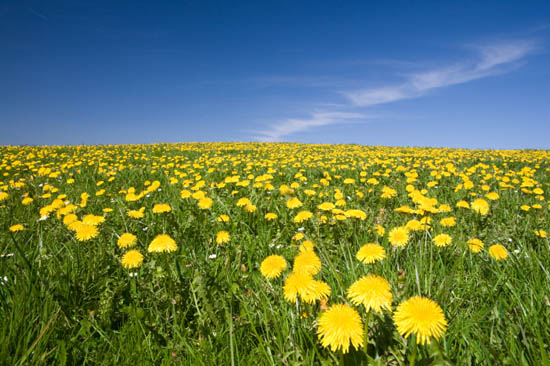
We don’t mean grab a handful of dirt and grass to get some extra minerals in your diet, but you might consider harvesting the early spring bloomers that grace your outdoor spaces before revving up the lawn mower for its first run. Tossed into soups, salads and puddings or used to decorate the icings on cakes and glazed baked goods, these flowery gems are like chicken soup for the winter blues.
Speedwell
Speedwell is a member of the Veronica genus, a large group of flowering plants that number more than 500 species. Also known by the common names gypsyweed, bird's eye and gentian (Veronica gentianoides), speedwell is prolific throughout the Northern hemisphere. The herb was used medicinally in ancient Rome and Greece and 17th century European physicians learned of its medicinal qualities from various Native American tribes.
If this tiny purple-blue flower dots your landscape, you can pluck the flowers and add them as a finishing touch to soups and salads. Baked in custards, the flowers will rise to the top to make an impressive display at dessert time. The leaves and flowers may be prepared as a tea and taken to help ease congestion from seasonal allergies. Speedwell tea is also traditionally used to stimulate appetite and digestion and there is some evidence that compounds in the plant may increase the production of red blood cells. Note: Be careful not to confuse speedwell with skullcap. The former is a species in the Plantaginaceae, or plantain family, and the latter is in the Lamiaceae, or mint family. You can tell the difference by looking at the stems; gentians have rounded stems, while skullcaps have square stems.
Cinquefoil
Also known as five-finger grass and mock strawberry, cinquefoil is a member of the rose family. In medieval Europe, the herb was included in potions and charms designed to help fisherman and those longing to find a mate net a good catch. Taken internally, cinquefoil constricts blood vessels, which makes it helpful in reducing inflammation. Prepared as a strong infusion and applied topically, the astringent properties of cinquefoil help to stop bleeding and speed the healing of wounds.
No flowers to pick from the lawn? Perhaps you’re an urbanite without any lawn at all? Not a problem. Dried herbal material is perfectly suited to prepare teas, tonics and infusions for cosmetic use. In fact, the beneficial phytochemicals in the plant are more concentrated in dried herbs than they are in the fresh plant.
Dandelion
The common dandelion is anything but common. This flowering “weed” is a member of the Asteraceae family, which makes it a relative to sunflower, daisy and aster. It is one of the few plants that reproduces asexually by a biological feat called apomixes, which means they produce seeds that don’t require fertilization by pollination. In effect, each plant literally clones itself. Dandelion is also economical in terms of leaving nothing to waste because the flowerheads, leaves and the roots are all used for culinary or medicinal purposes.
Dandelion flowers and the tender, young leaves are excellent additions to salads or sautéed in a bit of oil and served as vegetables. If you grew up in the country, you may have had the good fortune to sample dandelion wine or jelly. In herbal medicine, dandelion, which has properties similar to milk thistle, is used to “detox” the liver, with the added benefit of being more gentle than the aforementioned. The herb is also used to reduce inflammation associated with arthritis and chronic inflammatory skin conditions, such as psoriasis, eczema and persistent acne.
Caution: Do not collect herbs or flowers from an area that has been treated with chemical pesticides or herbicides. If in doubt, leave it alone and buy fresh or dried from a reputable distributer…like your friends at Monterey Herb Company.
